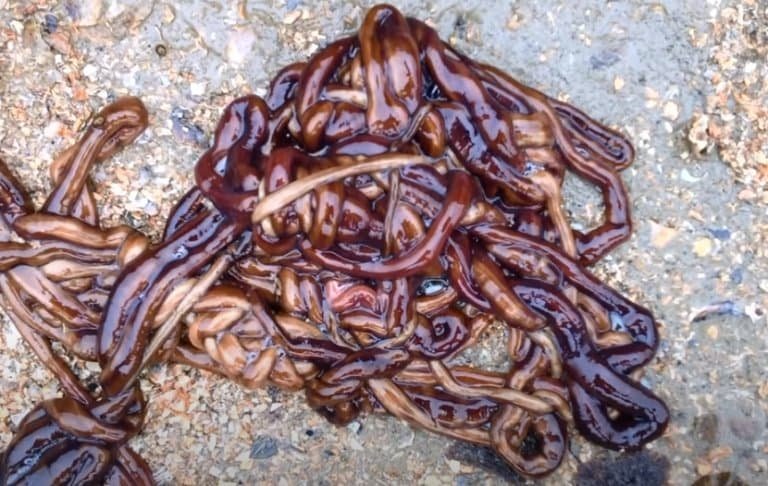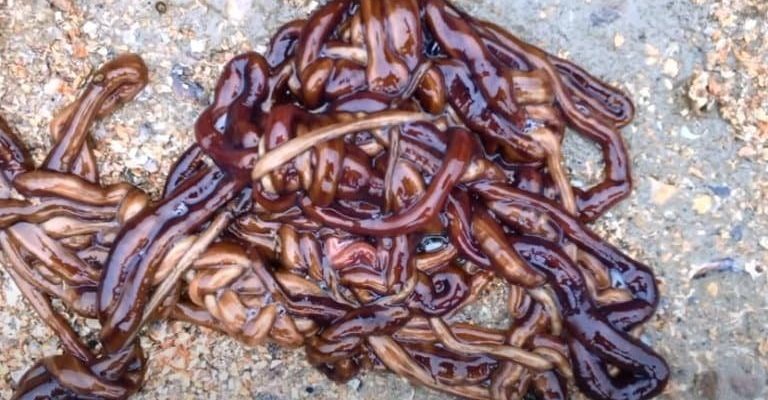
In this article, we’re going to dive into the fascinating world of bootlace worms. We’ll explore their biology, habitat, and most importantly, whether they have any negative impact on marine life. So, grab your favorite drink, and let’s chat about these intriguing creatures!
What Are Bootlace Worms?
Bootlace worms, or *Lineus longissimus*, are members of the genus Lineus and belong to the phylum Nemertea, commonly known as ribbon worms. These creatures are often found in shallow marine environments, lurking in sand or mud. Their name comes from their incredibly long, thin bodies that can resemble a shoelace.
Here’s the thing: bootlace worms aren’t just fascinating to look at; they also have unique biological features. They possess a **proboscis**, which is a long, tube-like structure that can shoot out to catch prey. Imagine a tiny snake that can extend itself to snag a meal—that’s pretty cool, right?
These worms are mostly found in Europe and parts of the North Atlantic. They thrive in both coastal waters and estuaries, making them adaptable to various environments. While they may sound odd, they play a role in their ecosystem—more on that later.
Are Bootlace Worms Dangerous to Fish?
So, you might be wondering, do bootlace worms actually pose any danger to fish? The good news is that bootlace worms generally don’t target fish as prey. They primarily feed on smaller marine invertebrates, like *polychaete* worms and crustaceans.
However, it’s essential to note that their **proboscis** can be quite effective for capturing smaller animals. In some cases, if a fish happens to be in their feeding zone and is small enough, a bootlace worm could potentially snag it by accident. But this isn’t a common occurrence.
Furthermore, bootlace worms are **not venomous**, so they won’t harm fish even if they do happen to catch one. In fact, many fish species coexist with bootlace worms without any issues. It’s more like having a quirky neighbor than a lethal predator lurking in the waters.
Impact on Marine Ecosystems
Bootlace worms may be harmless to fish, but they do play an important role in their ecosystems. Their feeding habits help control populations of smaller invertebrates, maintaining a natural balance. This makes them a valuable part of the marine food web.
Here’s where it gets interesting: bootlace worms themselves are also prey for larger marine animals, such as fish and other invertebrates. It’s a give-and-take relationship that supports marine biodiversity.
Additionally, these worms contribute to the nutrient cycle in the ocean. When they die, their bodies decompose, releasing nutrients back into the water, which supports plant life and, in turn, provides food for fish. It’s a natural process that showcases how interconnected marine life can be.
Can Bootlace Worms Harm Other Wildlife?
Now, let’s turn our attention to whether bootlace worms can pose a threat to other wildlife beyond fish. While these critters don’t often target larger animals, their presence can occasionally disrupt local habitats.
For instance, when bootlace worms become overly abundant, they might outcompete other invertebrates for food resources. This could lead to a decline in the populations of those species. Think of it like a party where one person eats all the snacks—eventually, everyone’s going to feel the pinch.
However, such events are relatively common in nature. Ecosystems tend to self-regulate over time, so a temporary spike in bootlace worm populations may not have lasting impacts. Still, it’s essential to keep an eye on any significant changes to ensure a balanced marine environment.
Human Interaction with Bootlace Worms
It’s only fair to touch on how humans interact with these intriguing creatures. Bootlace worms don’t have a direct impact on humans in terms of threats. But curiosity often leads us to explore their habitats. Marine biologists and nature enthusiasts find them fascinating due to their unique anatomy and behavior.
Unfortunately, bootlace worms can sometimes suffer from habitat destruction due to pollution and coastal development. When their environments are harmed, this can affect not only the worms but the entire ecosystem they support.
Efforts are ongoing in many regions to protect marine habitats, which can benefit bootlace worms and other wildlife alike. Sustainable practices, such as reducing pollution and preserving coastal areas, are essential for keeping these underwater ecosystems healthy.
In summary, bootlace worms don’t pose a significant threat to fish or wildlife. They have their own unique role within the ecosystem, and while their feeding habits can impact smaller marine invertebrates, they are generally harmless to larger marine life.
These worms represent a captivating part of our natural world, showcasing the beauty and complexity of marine ecosystems. So, the next time you hear the term “bootlace worm,” you can appreciate them for the fascinating creatures they are—much like the delicate threads that weave together the fabric of life in our oceans.
It’s crucial to protect their habitats and understand their place in the ecosystem, ensuring a balanced and thriving marine environment for generations to come.

